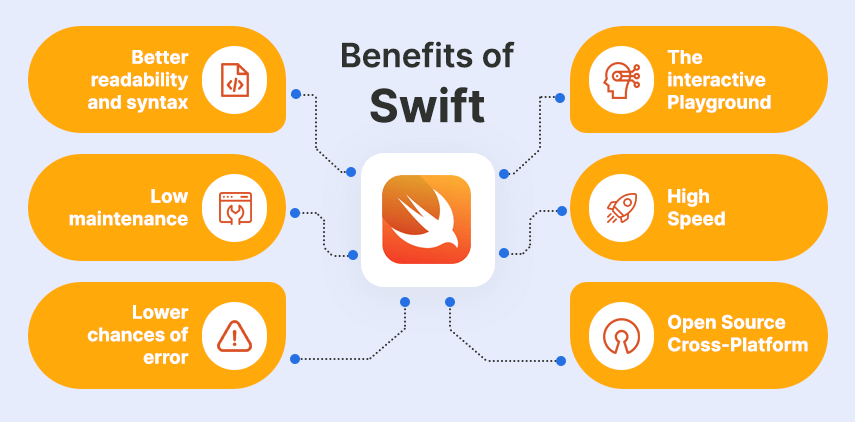One of the hurdles to get your hands dirty with Mac OS X and iOS development was Objective- C. Objective-C: a completely different language with a very unique way of doing things, and people often found it really difficult to get started with Mac OS X or iOS development with this language, but the good news is that now, you don’t have to. Apple released Swift in WWDC 2014, and with the advent of Swift, it has now become easier than ever to start developing for Apple platform.
Swift is a general purpose programming language, developed by Apple Inc. to replace older Objective-C. Swift draws its syntax from many languages including C, Ruby, Objective-C to name a few. It is multi-paradigm, compiled programming language, built with LLVM compiler. Among many other good news about Swift, one is that it uses the same runtime as used by Objective-C, and thus allowing Objective-C, Objective-C++, Swift and even C code to run together in a single program.
Swift supports many of the same concepts supported by Objective-C, and thus it makes it easier for developers to learn it who are already familiar with Objective-C. But that’s not the real deal. The main advantage of this language is for those who are just getting started with iOS or Mac OS X development, and Swift makes it real easy for those people to get up and running with developing for Apple hardware.
One other great benefit of Swift is its reduced amount of code as compared to Objective-C. For example, the class definition often consisted of two files, and so if one would like to define a method, the change has to be made in two files, but that’s now no more the case. You have got only file to make changes. So lesser number of lines means less code to maintain, and eventually, low cost for you next project.
In 2015, at Apple WWDC – a new version of Swift: Swift 2.0 was announced, and along with it, it was said that it would become an open source language, and this thing will attract more developers. With a number of developers contributing to this open source project, Swift will gain more maturity, and eventually, it will draw more & more developers to Apple development.
Objective-C used manual memory management, but after 2011, automatic reference counting was added to Objective-C to replace manual memory management, and now Swift is also using Automatic Reference Counting, and it makes it easy for developers to write code in it. Objective-C used pointers for holding and retrieving data, but since, some developers say that using pointers gives you a lot of flexibility, but at the same time, it enhances the complexity of the program. So in Swift, you don’t have to deal with pointer variables for holding and retrieving the data.
One other great addition to Swift is its dot syntax over Smalltalk-like syntax for calling methods on objects. So if a developer is coming from a dot-syntax language like C#, Ruby or Java, he would find it really easy to grasp the concepts in Swift, while the same thing was never true for Objective-C.
Apple have realized that Objective-C was not so user-friendly for a beginner developer, and that is why, they released Swift. So now it is up to the developers that how do they take advantage of it, and build some thing great with ease and comfort that was not possible before.





